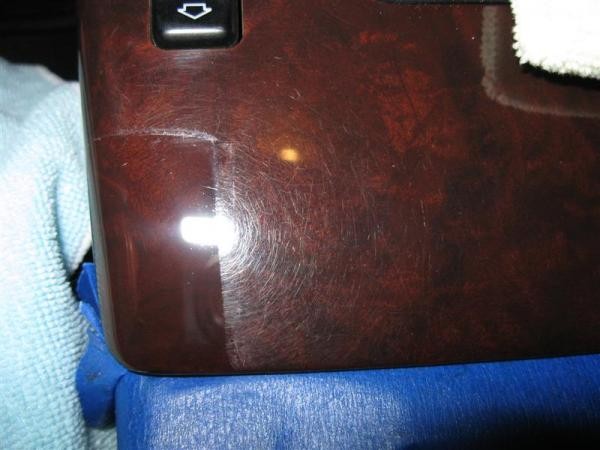Here's something I wrote in 2005....
We get a lot of questions on our forum and at our Saturday classes from people trying to remove scratches out of all kinds of things, for example:
How do you remove a scratch out of;
* Glass?
* Clear plastic like a headlight lens, radio face plate, dash gages?
* Chrome, like a chrome wheel?
* Paint?
* Interior plastics like a plastic door sill or glove box door?
* Stainless steel, like a stainless steel door sill protector?
* Aluminum?
* Rubber?
* Pebble textured plastic like trim components?
This article isn't' about the how-to for removing scratches out of the above materials or coatings but about the practical science behind how you remove a scratch or
any below surface defect out of any material or surface coating.
Read the below statement and think about it for a few minutes...
"Some materials and/or surface coatings don't lend themselves well to being abraded with the end-result looking good or looking like the original appearance"
In order to remove a scratch out of anything, metal, plastic glass, paint, etc.
You must remove material around the scratch until the upper most portions of the surface are level with or equal to the lowest depths of the scratch or defect you're trying to remove.
Does that make sense?
The below diagram is for paint, however the the same idea applies to just about any coating or surface material.
In essence, you don't really remove a scratch,
you remove material around a scratch.
Then the big question becomes...
Is the material or coating workable?
As in, can you abrade small particles of the material or surface coating and leave behind an original looking surface.
For example: Some things you can abrade, (remove the scratch), but you can never completely remove all of your abrading marks, thus you can't really fix the problem, all you can do is exchange one set of scratches of a different set of scratches.
The next factor you have to consider or at least understand is;
How thick is the surface material or material you're working on?
You are limited to what you can do with any material or surface coating. By this we mean there is usually a limit as to how much material you can remove before you run into the risk of removing too much and exposing the underlying surface or removing so much material that you change the component you're working on in a way that it won't look good and you can't undo the damage.
There's a saying on this forum we use often when discussing different members detailing projects and it goes like this,
"Sometimes you don't know what you can so until you try"
It's always a good idea to test your choice of products, applicator materials and application process, (by hand or by machine), to an inconspicuous area. If you cannot make a small area look good with your product, applicator and process, you will not be able to make the entire surface look good.
It's always a good idea to test first and error on the side of caution, versus make a mistake you cannot undo over the entire component or vehicle.



